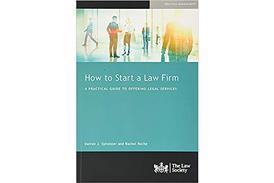Private eye

Paul Bennett and Andrew Roberts examine how the increase in firms backed by private equity investors is changing the face of law firm provision
This is premium content
In order to access this content you must be a member of the Leadership and Management Section and logged in.
If you have not registered before, register now to gain access to this content. You must use the email associated with your section membership.
Log inNot a Leadership and Management Section Member?
Join nowif you require assistance with joining this section, please email us at msadmin@lawsociety.org.uk or call us on 0207 320 5804










